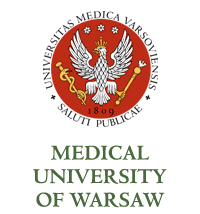You are here
Phytochemical analysis and evaluation of anti-inflammatory and antimicrobial activities of extracts prepared from pharmacopoeial plant material lime flower (Tiliae flos)
Research Project Objectives
Tiliae flos commonly known as lime flower or linden flower is a popular medicinal plat material used in the form of infusion to treat symptoms of common cold, such as sore throat, cough and fever. Tiliae flos has a monograph in the European Pharmacopoeia 8.0, which defines lime flower as whole dry flowers obtained from Tilia plathyphyllos L., Tilia cordata Mill., Tilia x vulgaris Hayne or their mixture. Although linden flower is a well-known traditional plant material the reports on its chemical composition and bioactivity are still limited. The major aim of the current proposal is the in-depth phytochemical investigation of lime flower obtained from pharmacopoeial Tilia species and the assessment of their anti-inflammatory and antimicrobial activity. In the course of the study the comparisons including statistical analysis of chemical composition and bioactivity of flowers collected from three pharmacopoeial species T. plathyphyllos, T. cordata, T. x vulgaris and two nonpharmacopoeial species Tilia americana L. and Tilia tomentosa Moench. will be performed.
Methodology
The planned study will be performed on samples of lime flower harvested from different Polish Tilia species in spring/summer 2014, 2015 and 2016. The research will be focused on pharmacopoeial Tilia species (T. platyphyllos, T. cordata and T. x vulgaris), as well as two species often occurring as contaminants specified by the European Pharmacopoeia 8.0 (T. tomentosa and T. americana). The samples of commercial preparations containing lime flowers will also be purchased and analysed. The phytochemical analysis will be performed using state-of-theart analytical techniques, such as UHPLC-DAD-MS/MS and HPTLC method, which will be developed and optimized during the current project. Infusions from lime flowers obtained from five species of Tilia will be characterized and major as well as some of the minor constituents will be identified using collected data. All extracts particularly those used for bioassays will be standardized using validated UHPLC method and more simple chemical methods. The isolation part of the phytochemical analysis will be carried out using linden flower obtained from T. cordata. Major constituents present in T. cordata flowers will be isolated and identified using spectroscopic and spectrometric methods such as 1D and 2 D NMR experiments, UV-Vis and HR-MS. The data obtained from the phytochemical part will be subjected to chemometric analysis with principal component analysis (PCA) and hierarchical cluster analysis (HCA) in order to show what are the differences in the chemical composition between extracts from all five species and whether those differences are statistically significant. The anti-inflammatory activity of lime flower extracts will be evaluated with human neutrophils’ model. The influence of extracts on the release of pro-inflammatory factors, such as reactive oxygen species (ROS) and protolithic enzymes (elastase, metalloproteinase-9) will be checked according to the spectrometric methods used in the lab of principal investigator. The effect on the production of cytokines, including interleukins-8 and 1β will also be investigated with ELISA tests. The influence of extracts on the growth and viability of bacteria belonging to the Streptococcus genus such as S. pyogenes, S.pneumoniae and S.aureus will be determined. The minimum inhibitory concentration (MIC) and minimum bactericidal concentration (MBC) will be established.
Research project impact
Expected impact of the research project on the development of science, civilization and society The project is focused on basic research and proposes a comprehensive analysis of Tiliae flos at both phytochemical and bioactivity aspects. It will significantly enlarge the knowledge about the chemical composition of popularly used plant material especially less investigated T. cordata and T. x vulgaris and will resolve the question about the justification of the use of this drug as anti-inflammatory agent using human neutrophils’ model. Performed experiments will also explain whether the lime flower extracts posses antimicrobial properties. The project will also answer the question about differences in the chemical composition of lime flower obtained from different pharmacopoeial Tilia species. The differences in the chemical composition will have a significant chemotaxonomic value and will point out an alternative method for the identification of Tilia species occurring in Europe. The method for the comprehensive phytochemical characterization and standardization of analyzed plant material will be developed. In the future the solution of proposed scientific problem may contribute to the improvement in the quality, efficacy and safety of manufactured preparations containing Tiliae flos.

